MXA BUILDS A TMR/VERTEX 2014 KAWASAKI KX100
It is unfortunate, but we now live in a world populated by four-stokes. No matter to what degree the public or the manufacturers are to blame, we all have to live with the consequences. The venerable two-stroke lost traction in the marketplace when the hype of four-strokes caught everyone’s imaginations (aided by double the displacement). But when the recession hit the world economy, the chink in the four-stroke’s previously impenetrable armor became all too evident. Four-strokes were too expensive to buy and too expensive to repair. The sport began to shrink and bike sales took a dive—except at KTM, who embraced the two-stroke as an affordable alternative in a four-stroke-only world. KTM built 50cc, 65cc, 85cc, 125cc, 150cc, 200cc, 250cc and 300cc two-strokes—and reaped the rewards.
It was as though the Japanese manufacturers came upon two roads that diverged in the woods…and chose the wrong one. KTM, on the other hand, thanks to their ambition, passion and money, went down both roads at the same time. They didn’t embrace four-strokes and forget two-strokes; they romanced both designs.
Finally, in 2014, Kawasaki decided to fight back by building its first new two-strokes in 10 years. The 2014 Kawasaki KX85 and KX100 were all new from the ground up. It may not have been the full-frontal assault that KTM put on, but it was a start. Minicycles are still the holy grail of two-strokes.
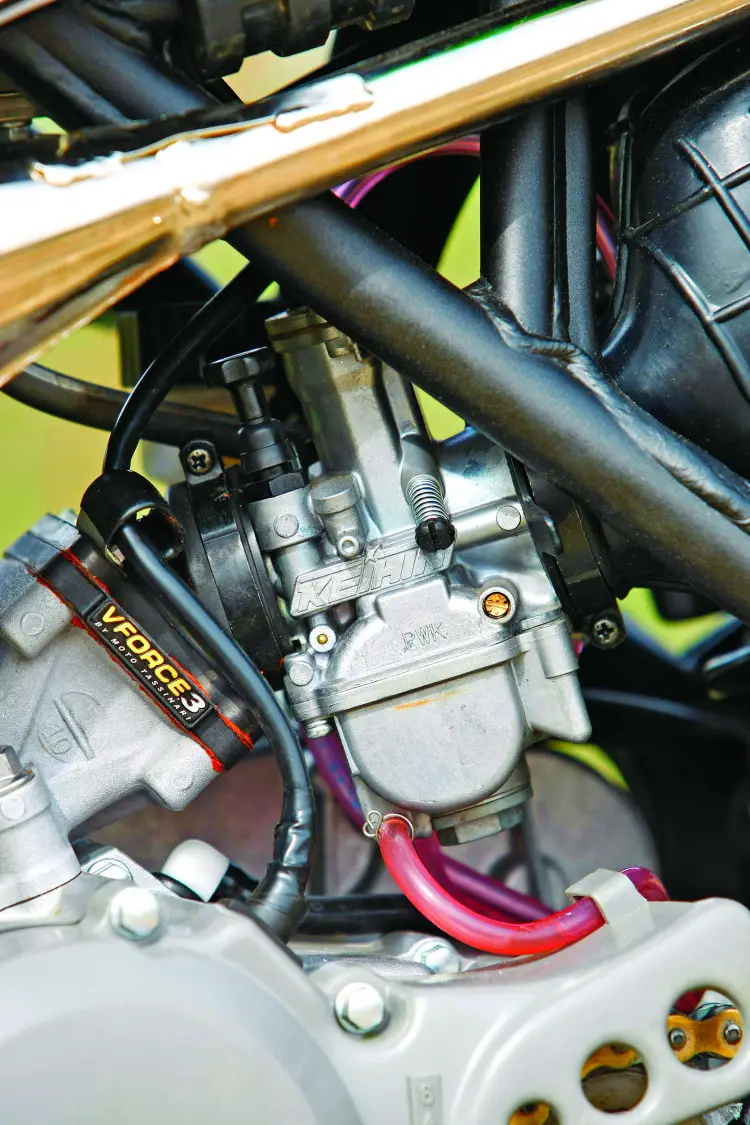
Now that Kawasaki’s revamped KX85 and KX100 have begun to gain traction on the showroom floors, the aftermarket companies are starting to take notice. The MXA wrecking crew had Tom Morgan Racing and Vertex Pistons apply their magic to a 2014 Kawasaki KX100. We didn’t get carried away with the project, but instead made small changes in the areas that matter most. Our goal was to build a superb-handling, extremely reliable, sharp-looking machine with a strong powerband.
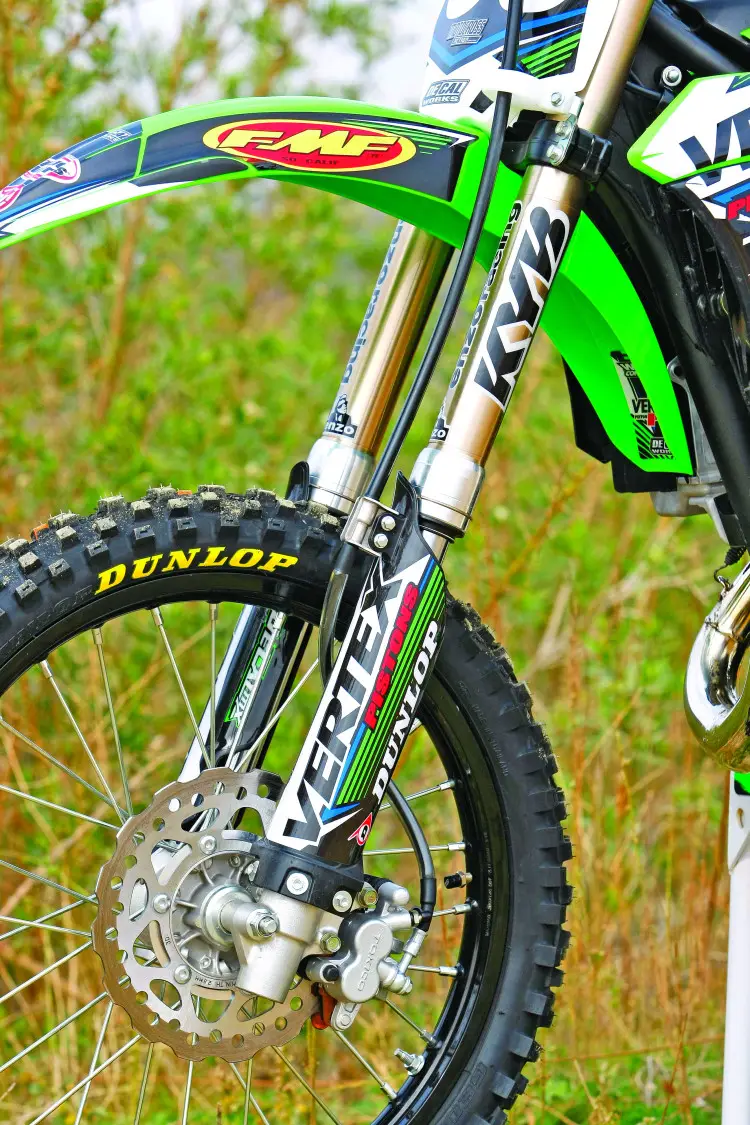
We started with the powerplant. In stock trim, the KX100 powerband is very easy to ride. It is tailored to entry-level riders, and the brunt of the power is down low. Our goal was to keep the reliability but produce a broader powerband with a solid midrange hit. Our choice of tuners was former factory mechanic Tom Morgan. Tom has decades of experience with two-stroke engines, and he understood what we wanted, which was most of all to keep the mods simple and affordable. Tom ported the cylinder and polished the head. This kept the cost under $250. Tom also gave us some tips for bolt-on power that would help the KX100 come into its own.
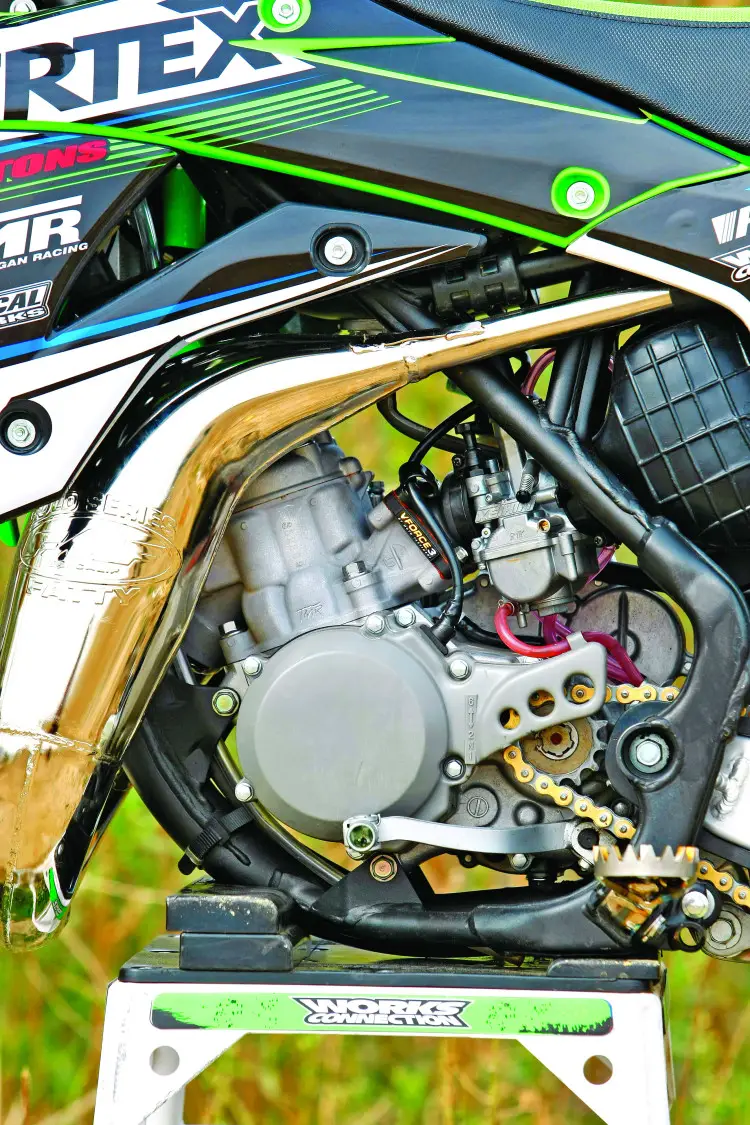
Internally, we swapped the stock Kawasaki piston for a single-ring Vertex piston. We didn’t go the high-compression route because we didn’t want to be saddled with race gas. In making this decision, we had to accept that the quality of 91-octane pump gas has been going down in consistency over the last few years. Tom Morgan suggested that perhaps we should sweeten our pump gas with a percentage of VP Racing C-12 to ensure adequate octane at all times. Externally, we added an FMF exhaust system, Moto Tassinari VForce3 reed valve and a Uni air filter.
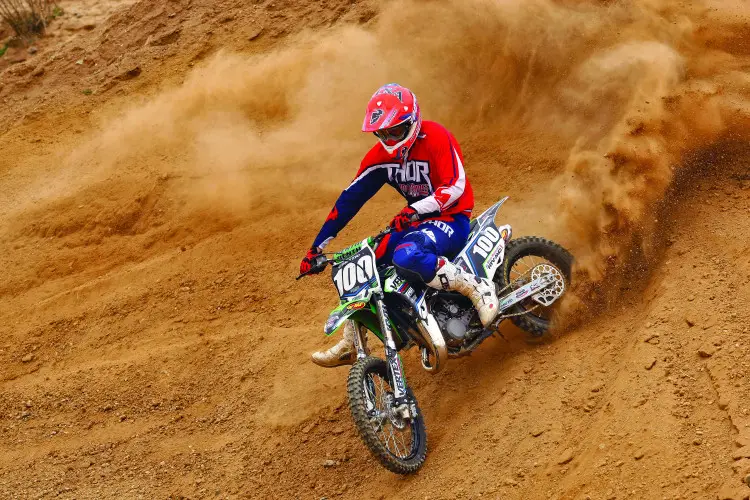
As far as the chassis was concerned, we had a few issues with the suspension that needed to be addressed. Enzo came to the rescue, even though the forks have no rebound damping clickers. Enzo re-valved the forks and shock to make them work much better for our test riders.
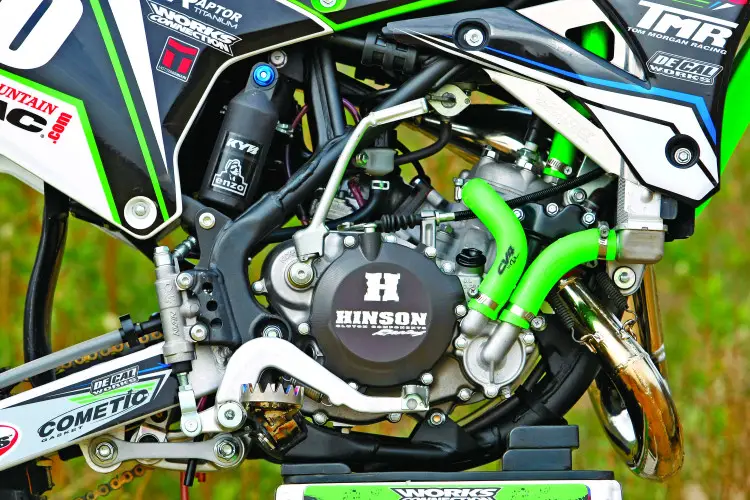
Were we happy when our TMR/Vertex KX100 hit the track? Yes. The power was broadened and had a nice hit exiting corners. There was no need to abuse the clutch to get into the meat of the power. The suspension rode higher in the stroke and was much plusher. We loved the stylish look and black accents of the custom DeCal Works graphics.
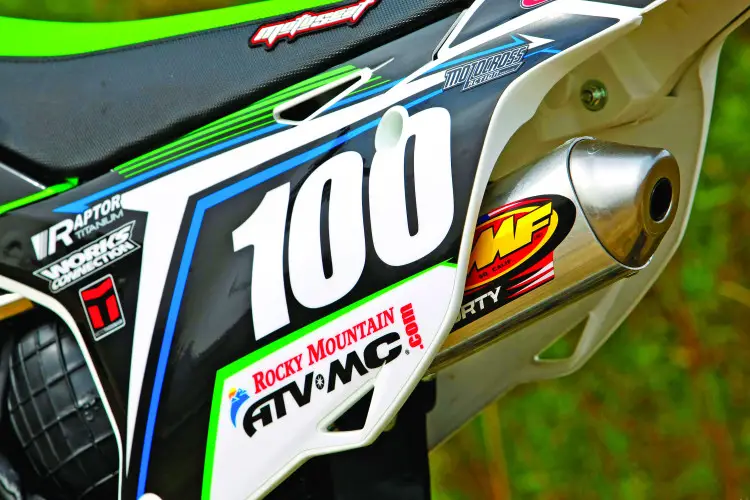
For more information, go to
www.rockymountainatvmc.com, www.morganracingengines.comand www.vertexpistons.com.



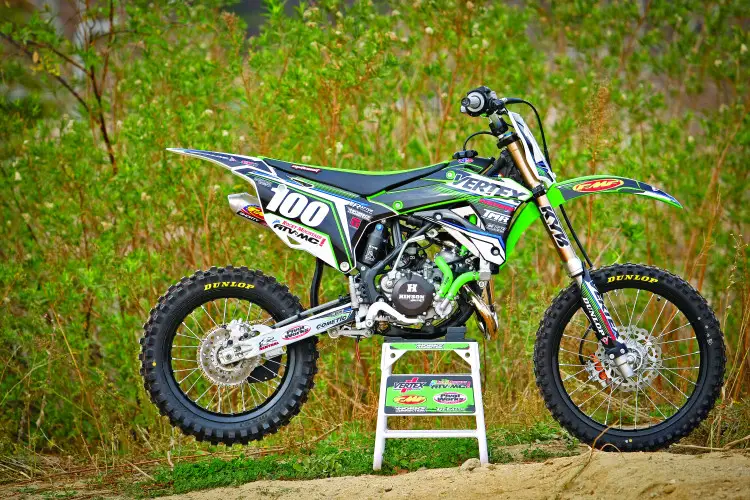



Comments are closed.